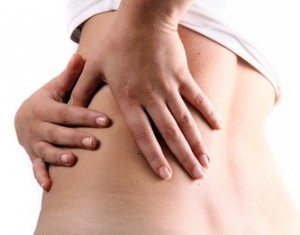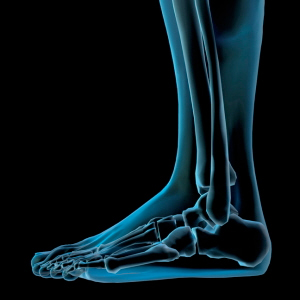Pain

Back Care Problems
Because humans defy gravity by standing upright, the spine is often under stress. This often leads to back pain, one of the most common reasons why Australians and New Zealanders visit their chiropractors. The secret to relief is to strenghthen both the vertebrae and the surrounding tissues.
What is it?
Although it's frequently very uncomfortable, most back pain isn't serious. Typically, the lower back, which supports almost all the body's weight, is the area most affected. But inflammation of, or even a minor injury to, any of the bones in the spine (vertebrae) or the muscles, cartilage, nerves or other tissue connected to the spine can bring on pain.

Fibromyalgia
If you can't explain why every muscle in your body seems to hurt lately, you may have fibromyalgia, an elusive disorder that affects millions of people.
This condition is most common among women between the ages of 20 and 50, although it can strike anyone at any age.

Toothache
A toothache is usually the result of a cavity formed by the bacteria that cause tooth decay (known medically as dental caries). Cleaning out and filling the cavity brings a quick end to the pain. Without this treatment, however, the pain is likely to get worse.
What is it?
Toothache or tooth pain is caused when the nerve root of a tooth is irritated. Dental (tooth) infection, decay, injury, or loss of a tooth are the most common causes of dental pain. Pain may also occur after an extraction (tooth is pulled out). Pain sometimes originates from other areas and radiates to the jaw, thus appearing to be tooth pain. The most common areas include the jaw joint, ear pain, and even occasional heart problems.

Carpal Tunnel Syndrome
If wrist pain wakes you at night or you feel pins and needles in your hands when you drive, you may have this disorder. Though considered a condition of modern times, carpal tunnel syndrome has in fact been recognised since the 1880s.
What is it?
The bones and ligaments in the wrist (medically known as the carpus, from the Greek karpos) form a pathway called the carpal tunnel. Here the median nerve, which controls movement and feeling in most of the hand, and the tendons that connect the arm muscles and the hand muscles pass from the forearm into the hand. The tunnel can be narrowed by swelling of ligaments or tendons, bone dislocation, bone spurs or fluid retention. This narrowing may compress the median nerve, causing the pain, numbness and weakness characteristic of carpal tunnel syndrome.

Chronic Pain
No matter where it hurts - in your head, your toe or anywhere in between - chronic pain can have a major impact on both physical and emotional well-being.
Fortunately, natural therapies can be added to the wide range of treatments now available to help in the control of pain.

Headache
Although headache pain sometimes can be severe, in most cases it's not the result of an underlying disease. The vast majority of headaches are so-called primary headaches. These include migraine, cluster headache and tension headache.
What is it?
A tension headache is the most common headache, and yet it's not well understood. A tension headache generally produces a diffuse, usually mild to moderate pain over your head. Many people liken the feeling to having a tight band around their head. A tension headache may also cause pain in the back of your neck at the base of your skull.

Gum Disease (Gingivitis)
Gingivitis is a mild form of gum disease that causes inflammation and bleeding. Untreated, it can lead to periodontitis, a far more serious condition.
What is it?
If your gums are swollen, tender and bleed easily when you brush your teeth, you're not alone — nearly 80 percent of American adults have some form of gum (periodontal) disease. One of the most common of these is gingivitis, which develops when bacteria build up between your teeth and gums, leading to irritation, inflammation and bleeding. If not treated, it can progress to more serious gum diseases such as periodontitis and eventually to the destruction of bone and to tooth loss.

Migraine
For the estimated 10% of men and 20% of women who suffer from migraines, there's good news: new research that certain supplements may be as effective as conventional medicine in the prevention and treatment of these debilitating headaches - or even more so.
What is it?
A migraine is a severe, throbbing headache that usually begins on one side of the head (hence the name 'migraine' - from the Greek hemikrania, or 'half skull') but may affect the whole head. Attacks can last for hours or days and may be preceded by warning signs.

Muscle Aches and Pains
Though not serious, muscle cramps or the muscle soreness that comes from overextending yourself can be very uncomfortable.
And the weekend gardener is just as likely to be affected as the world-class athlete.
There are two common types of muscle pain. The first is soreness and stiffness that develop as the result of overdoing some physical activity - whether running a marathon, digging in the garden or simply carrying a heavy bag of groceries.

Pinched Nerve
A pinched nerve occurs when too much pressure is applied to a nerve by surrounding tissues. If the pressure isn't relieved, it can cause permanent damage to the nerve.
What is it?
Any pressure applied to a nerve by the surrounding tissue will produce irritation and will disrupt the nerve's functioning, with consequences that can range from aches and pains to a loss of feeling or weakening of muscles. The pinching can occur for many reasons — pregnancy, an injury, repetitive motions or joint disease, to name just a few. It may also occur anywhere in the peripheral nervous system (that is, nerves outside the brain and spine). Nerves passing over a rigid prominence, such as a bone, are particularly vulnerable.

Sciatica
Sciatica is the term given to pain down the leg, which is caused by irritation of the main nerve into the leg, the sciatic nerve. This pain tends to be caused where the nerves pass through and emerge from the lower bones of the spine.
What is it?
The longest nerve in your body, the sciatic nerve runs from your pelvis through your buttock and hip area and down the back of each leg. It controls many of the muscles in your lower legs and provides feeling to your thighs, legs and feet. The term "sciatica" refers to pain that radiates along the path of this nerve — from your back into your buttock and leg.

Sciatica
Sciatica is the term given to pain down the leg, which is caused by irritation of the main nerve into the leg, the sciatic nerve. This pain tends to be caused where the nerves pass through and emerge from the lower bones of the spine.
What is it?
The longest nerve in your body, the sciatic nerve runs from your pelvis through your buttock and hip area and down the back of each leg. It controls many of the muscles in your lower legs and provides feeling to your thighs, legs and feet. The term "sciatica" refers to pain that radiates along the path of this nerve — from your back into your buttock and leg.

Shin Splints
Whether you're running after a soccer ball, jogging around the neighborhood park or training for a marathon, you're at risk of running-related injuries. One of the most common running injuries is shin splints.
What is it?
People sometimes mistakenly use the term shin splints to refer to a wider array of lower leg problems. The term technically refers to a specific problem that causes pain along your shinbone (tibia) — the large bone in the front of your lower leg. The pain is the result of an overload on your tibia and the connective tissues that attach your muscles to your tibia. The medical term for this condition is medial tibial stress syndrome.

Shingles
Remember chickenpox? Its virus is still lurking in your nerve cells and can flare up at any time during your adult years, causing the intensely painful blisters known as shingles. The good news is that natural remedies can often help to ease this sometimes lingering condition.
What is it?
Shingles (herpes zoster) is a form of the herpes virus that causes chickenpox. After an attack of chickenpox, the virus lies dormant in nerve cells. Later, it can be reactivated, producing intensely painful clumps of skin blisters. Shingles is not contagious, though open sores can transmit the virus to young children or others who've never been infected.

Sprains & Strains
Whether caused by vigorous weekend activity, slipping on wet ground or stepping off a curb the wrong way, strains and sprains can affect anyone. Whatever the reason, it's surprising how much a program of natural therapies can help.
What is it?
Strain are minor injuries to the muscles. They occur most often in the calf, thigh, groin or shoulder, causing soreness and stiffness. Sprains are similar to strains, but are more serious and painful, and take longer to heal. They can entail damage to ligaments, tendons or muscles - usually those surrounding a joint.

Tennis Elbow
Tennis elbow (lateral epicondylitis) is one of several overuse injuries that can affect your elbow. As you might guess, playing tennis is one cause of tennis elbow — but many other common activities can cause tennis elbow, too.
What is it?
The pain of tennis elbow occurs primarily where the tendons of your forearm muscles attach to the bony prominence on the outside of your elbow (lateral epicondyle). Pain can also spread into your forearm and wrist.

Tendonitis
Tendonitis is inflammation of a tendon. It commonly affects shoulders, elbows and knees.
What is it?
Tendonitis is inflammation or irritation of a tendon — any one of the thick fibrous cords that attach muscles to bone. The condition, which causes pain and tenderness just outside a joint, is most common around your shoulders, elbows and knees. But tendonitis can also occur in your hips, heels and wrists.





